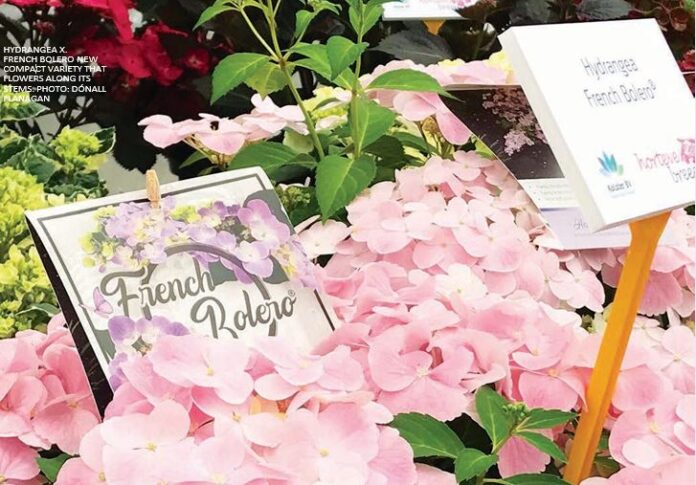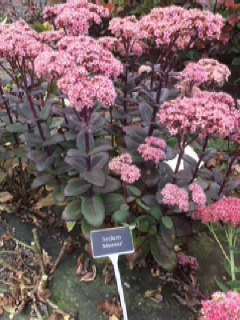Dónall Flanagan, Teagasc Nursery Stock / Ornamentals Specialised Advisor explains how Hydrangea producers are adapting to increasing demand for novelty colours and long flowering periodsLarge flowers in subtle and brilliant colours; Hydrangeas have become a must have for landscapers, gardeners and florists. Hydrangea plants have proven to be hugely popular in the last 20 years. A new market has developed for younger gardeners and Hydrangeas are now one of the most popular plants sold across Ireland, Europe and North America. For example, Hydrangea ‘Endless Summer’ has sold almost 40 million plants since its introduction. Their future looks positive as they are hardy, suffer few pests and diseases and are innovating at a fast pace. For many years, Hydrangeas were seen as old fashioned plants. Introductions of remontant (repeat flowering) plants such as ‘Endless Summer’, with long flowering seasons and more tasteful colours in the late 90’s introduced a better product. Landscapers have been loyal to the well established ‘Annabelle’ and ‘Limelight’ but garden centre customers’ demand for novelty and longer flowering plants has pushed innovation. The industry has responded with support, through breeding, trials, conferences and technical improvement in production and marketing. The result today is a demand that witnesses sales of Hydrangea in the tens of millions across Europe each year. DEFINITION Hydrangea are deciduous shrubs; H. macrophyla traditionally flower on stem tips on one-year-old wood, H. arborescens and paniculata on new growth. The familiar colour change from pink to blue due to pH level is well recognised. Most coloured varieties are more blue than pink in acid soil. Flowers of H. macrophyla and arborescens are ball shaped and categorised as ‘mop head’ or ‘lacecap’ varieties. H. paniculata has cone-shaped flowers. PRODUCTION Young plants can be grown from unrooted cuttings (URC) or plugs. Low costs and ease of rooting have made URC economical and allow access to a wide range of varieties from inside and outside the EU. Potting and production of young plants is highly specialised with specific programmes for pruning, plant growth regulators and pot sizes to deliver plants of consistent quality with exacting branching. If pruning is carried out at the wrong time, the following year’s flower buds will be lost. Each variety will normally benefit from light pruning by pinching of new growth and PGR treatment. Refrigeration of plants for forcing is begun once flower buds are set. This is to break dormancy and increase the uniformity of flowering. Often plants are stored as early as August, well before natural leaf drop and subsequently, plants are processed to remove dead leaves and prevent rotting. |
CUT FLOWERS AND FOLIAGE
A small number of growers in Ireland are already producing quality blooms in limited numbers for Irish florists. A long shelf life and a changing colour with maturity make these a versatile and valuable flower. Work carried out by Andy Whelton and Kildalton College trials have shown varieties with dark green and large leaves or dark stems such as the variety Black Steel to be of high interest to the foliage and flowers sectors. Flowers produced on one-year-old wood can be pruned heavily in summer after flowering to produce fewer but larger blooms the following year. If plants are produced for foliage only there is less concern of pruning and frost damage. ✽ |
 DÓNALL FLANAGAN is a Nursery Stock / Ornamentals Specialised Advisor working with the Teagasc Horticulture Development Department in Ashtown, serving the nursery stock and ornamental sector. He has been working with Teagasc since 2007 and in his current role since 2016. DÓNALL FLANAGAN is a Nursery Stock / Ornamentals Specialised Advisor working with the Teagasc Horticulture Development Department in Ashtown, serving the nursery stock and ornamental sector. He has been working with Teagasc since 2007 and in his current role since 2016.
Dónall Flanagan – Teagasc, Ashtown Food Research Centre Mobile: 087 703 5823; Tel: 076 111 402; Email: donall.flanagan@teagasc.ie |








